GENERATIONS OF EXPERIENCE
New tool helps ranch homesteaded in 1884 keep up with changing needs
September 17, 2020
"It's a way of life," local rancher and retired Forest Service employee Bill Meadows said. "We decided we are going to stay here and work until we die." Meadows and his wife Helen were referencing ranch life on their Little Beaver Creek homestead established 136 years ago by Bill's maternal grandparents.
One of the Meadows' biggest secrets in the ranching world has been the use of QuietWean. Bill said he does not know anyone other than himself who uses the device, but highly recommends it to avoid separation and limit stress during weaning of calves.
According to Bill, most ranchers wean by separating their calves and mothers for days. "The biggest advantage of the flappers is the health of the calves," Bill shared. "It is low stress weaning," he said while pitching hay to 23 pair of cattle, who were recently released to pasture with the weaning devices in place.
A Red Angus, properly named Scratchy, approached for a quick rub of her neck and chin when Bill demonstrated how to insert QuickWean. Bill demonstrated how the prongs are easily inserted in the nostrils of the calves, providing a barrier that eliminates the ability to suckle. Each pair is able to graze in the pasture without having to be separated. "They are still grazing, and they can stay with mom," Bill said, hoping his QuietWean success story will help other ranchers. "They do not have to separate so there is less stress and bawling."
The Meadows have been using QuietWean for at least 10 years and continue to reuse the same devices annually. "I saw them years ago in one of my publications," Bill claimed. He is glad he gave them a chance. Roughly six days into weaning, the Meadows remove the devices and then separate the weaned pairs.
Bill and his trusty canine companion Shep, who like Bill is 77 years young, enjoy the labor ranch life brings them. "Your health is better because you just keep moving and working." Over a cup of coffee, of which the beans were home roasted by the Meadows, the couple shared the heritage of the homestead. Recently, the ranch received two pages of ink in "Legacies: The Values, Principles and Purpose of Montana Farm Bureau," a book highlighting Montana ranch life and Farm Bureau leaders from 1919 to present.
Author Laura Nelson "spent an incredible amount of time delving through old newspapers and records at the Montana Historical Society and local history museums, poring over past Montana Farm Bureau publications, visiting farms and ranches and talking to an incredible array of Farm Bureau leaders," stated Montana Farm Bureau Federation's Ag NewsWire.
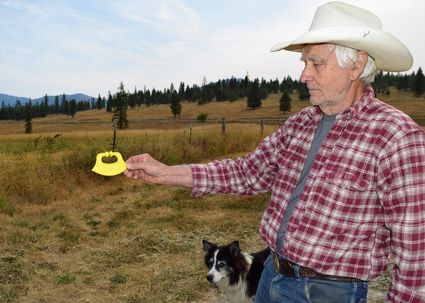
LESS STRESS IS BEST when weaning calves, according to Bill Meadows. QuietWean, a device he uses to reduce stress on his calves during weaning, allows him to keep the pairs together during the process. He and his canine friend, Shep, showcase the device.
The Meadows' Little Beaver Creek ranch was homesteaded in 1884 by Bill's grandfather, E.J. Thompson (who was the first Montana Representative from Sanders County), and his wife Nina. E.J. was from Wisconsin and according to Bill, "ran from there when he was 17 because his family was going to turn him into a priest." Three generations of the Thompson family have remained to work the original ranch. Bill is certain the ranch will remain in the family as his son Jake and grandson Cruise (who would rather pick berries with "Granny" than watch a Disney movie), are ready to commit.
Not only has the Meadows' ranch been a constant in the history of Sanders County, the Thompsons also established social roots in Sanders County that continue to enhance the lives of locals. Nina was positioned in 1920 to serve as Montana Farm Bureau's second vice president, representing the region well. Also, she was a main component in forming the boys' and girls' clubs that eventually developed into the youth agriculture program many enjoy today; Sanders County 4-H.
During the early 1900s, the Meadows retold stories of how 4-H members traveled to Spokane, Washington, by train to compete. This year, youths who participated at the Plains Fairgrounds Labor Day weekend are probably grateful for two reasons. First, they did not have to travel two states away to contend, and second, they have a 4-H program available for them to enjoy.
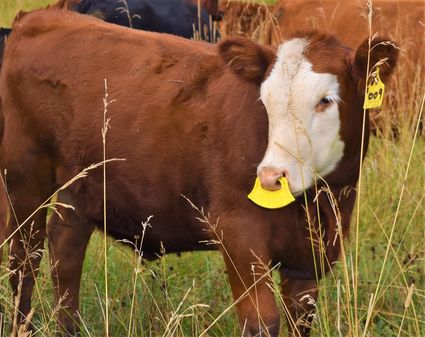
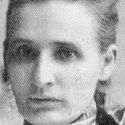
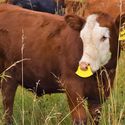
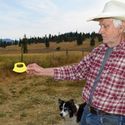








Reader Comments(0)